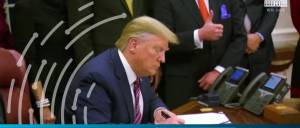Company Voluntary Arrangements (CVAs)


Trade Finance without Barriers
Informing Today’s Market, Financing tomorrow’s Trade.
Get Trade FinanceContent
We work with many vibrant, growing companies and assist with raising finance as they expand. However, we understand that the business cycle sometimes means that times are difficult and companies with debt or in alternative circumstances need to look to raise money in a new way.
What is a CVA?
A Company Voluntary Arrangement (CVA) is a formal insolvency process that gives insolvent businesses that remain viable the opportunity to restructure their debts and pay them over a longer period of time. By spreading the debts over a period of up to five years, the CVA gives the struggling business the chance to trade its way out of trouble and turn its finances around.
The CVA is a voluntary arrangement which 75 percent of the business’s creditors (by value of debt) must agree to. Creditors are usually happy to accept a CVA proposal as the alternative is to liquidate the assets, which usually results in a small (if any) creditor repayment. If the Company Voluntary Arrangement is successful then creditors will typically receive most or all of the money they are owed. They may also choose to carry on working with the recovering business as it continues to trade.
How is a CVA initiated?
The decision to enter into a CVA can be taken by a liquidator, administrator or the company directors. A Licensed Insolvency Practitioner will be appointed to commence the process. The company will be analysed and a proposal set out which details how much the company can realistically afford to repay. If the creditors agree with the CVA proposal then it will begin.
What are the advantages of a CVA?
- The business is protected from negative or detrimental action being taken by creditors
- A legally binding solution
- Directors can start a CVA and their conduct is not investigated
- Directors are provided with more time to turn the business around without fear of legal action
- Usually creditors will support a CVA as it often means more of the debt is repaid
- Structured payments are implemented so the business knows how much it has to repay
- It is an insolvency solution that can resolve financial difficulties
- It is perceived as a positive way of dealing with debt
- The business is able to carry on trading and attempt to stabilise
- The business is given breathing room to restructure the organisation and return to profitability
- It’s cheaper than other insolvency solutions
What are the disadvantages of a CVA?
A Company Voluntary Arrangement is a process that’s designed to save a business from collapse, so inevitably there are some difficult aspects of the agreement for the business. That includes:
- The CVA will appear on the company’s credit record so it may be difficult to continue with current lenders or arrange new finance deals.
- The company will have to make its monthly CVA repayments without fail. To stick to the repayment schedule on top of ongoing costs will require determination and could be challenging.
- CVA proposals take time to put together. If there is serious ongoing legal action, it may be necessary to enter into administration to protect the company before the CVA is proposed and the moratorium begins.
- 75 percent of creditors (by value) must agree to the CVA. If you have creditors that are strongly opposed to the CVA then it will not go ahead.
- The CVA is only binding on unsecured creditors. That means you’ll still have to worry about secured creditors withdrawing funding or taking steps to appoint an administrator.
What is the CVA process?
Before a CVA can be proposed, it will have to be proven that the company is insolvent, viable and is operating under fundamentally sound practices. This is the role of the Licensed Insolvency Practitioner. They will need to see projected cash-flow forecasts to assess whether the business will generate sufficient capital over time to repay its debts.
The Insolvency Practitioner will also ensure the business is able to pay the ongoing liabilities it will incur by continuing to trade such as VAT and PAYE.
From initial contact through to the agreement of a CVA, the process typically takes 6-8 weeks. This is how it works:
- The Insolvency Practitioner will take steps to understand the company’s financial position and its affairs and draft a written proposal containing realistic repayment terms.
- The company directors will review the proposal. They may agree the terms or request amendments, but the Insolvency Practitioner must be satisfied the proposal has a reasonable chance of success before proceeding. The Insolvency Practitioner will then write to the company’s creditors to invite them to a creditors’ meeting.
- A Moratorium can be applied for which prevents HMRC, suppliers and other creditors commencing or continuing legal action while the proposal is negotiated.
- The creditors’ meeting gives the creditors the opportunity to discuss the proposals and air any concerns they may have. In most cases, the creditors will vote by proxy as to whether the proposals should proceed rather than attending in person. If 75 percent of the creditors agree to the proposal then the CVA is agreed.
- The Insolvency Practitioner also arranges a shareholders’ meeting with a majority of 50 percent or more required for the CVA to be approved.
- If both the creditors and the shareholders agree to the CVA then the Insolvency Practitioner will issue a report to the court and the creditors detailing the outcome of each meeting, who was there and the result of the vote.
- Scheduled payments to the creditors will be made via the Insolvency Practitioner. If all payments are made then the company is protected from further action. If the company defaults on a payment then there’s a good chance it will be wound up via a compulsory liquidation.
What else do company directors need to know?
In any insolvency procedure, the company directors are obliged to act in the best interests of their creditors. That means they cannot pay certain creditors ahead of others or continue to trade and accrue debts they know they will struggle to repay.
During the Company Voluntary Arrangement process, the directors will remain in control of their business and there will not be an investigation into their conduct, which can be beneficial. If one of the company’s creditors is HMRC then all accounts and tax submissions will have to be up to date so it can get a clear picture of the business’s tax position.
How we can help
It is always worth discussing whether we can assist with financing or if it is deemed that the situation has moved along and a CVA or other insolvency process is the best option. If that’s the case then we are always on hand to assist with the best people.






















